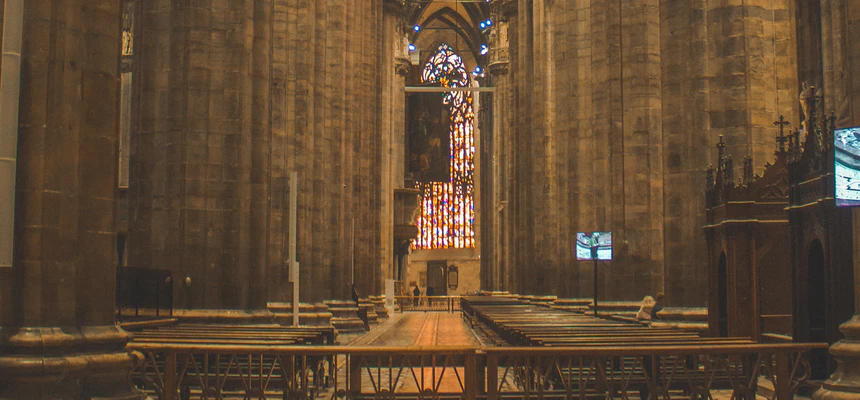
Guibert of Ravenna, Clement III, has been referred to as of irreproachable character. So, why did Pope Pascal toss his body in the Tiber?
Born around 1029, he early entered the Church and was a cleric by his 20s. Empress Agnes appointed him chancellor of Italy in 1058. In that year, Guibert participated in the election of Nicholas II.
Three years later, Nicholas was dead. In the meantime, Guibert had joined the anti-reform party and helped elect Cadalous of Parma as anti-pope Honorius II, backing the German imperial court. The reform party and the Italian cardinals, in keeping with the election laws of Nicholas, elected Alexander II. Duke Godfrey, who we have seen as active through the years, Peter Damian and Archbishop Anno of Cologne joined forces to push the recognition of reformist Alexander as the true pope. They eventually even convinced Agnes, who then dismissed Guibert from the chancellor position she had given him some years before.
Apparently, Guibert continued in contact with the imperial court despite Agnes. By 1072, the young emperor, Henry IV, named him to the vacant see of Ravenna. Guibert took the oath of allegiance to the pope and became archbishop there.
Shortly afterwards, 29 April 1073, Hildebrand became Gregory VII. As mandated, Guibert attended the Lenten Synod in March 1074. This important synod passed laws on simony, lay investiture and incontinence of the clergy.
Although Guibert did not disagree with these laws, he became a visible leader of opposition to the reforms, most likely because of Gregory’s strict interpretation of the new laws. Guibert refused to attend the second Lenten Synod in 1075. He was angry at Gregory’s vehement opposition to the imperial court. Gregory suspended Guibert from his archbishopric for not attending the synod. Henry IV, then, openly opposed Gregory.
Months later, at the synod at Worms, Henry presented a resolution to depose Gregory, supported by the pro-imperial bishops, including Guibert. In retaliation, Gregory announced the excommunication of Henry and the bishops at the Lenten Synod two months later. In April, the pro-imperial anti-reform party met at Pavia, with Guibert presiding. They proclaimed the excommunication of Pope Gregory. In retaliation, Gregory excommunicated Guibert and the archbishop of Milan.
For several years, there was an unsteady reconciliation between Henry and Gregory. Finally, in 1080, Henry presented a new decree to depose Gregory and elect Guibert as pope. He took the name of Clement. Henry swore to take him to Rome and install him. This was not as easy as thought. The rebellious nobles fighting the empire finally lost to Henry, so he thought he had the ability to attack Rome. He failed to do so until 1084. On 21 March, the emperor finally entered the city with his “pope”. Gregory retreated to Castel Sant’Angelo. On the 24th, Guibert was enthroned and a week later, the new pope crowned Henry as emperor.
The Norman army of Robert Guiscard came to the rescue of Gregory with swords drawn! Henry and Guibert/Clement had to leave town. Guibert went back to Ravenna, where he still had his archbishopric. Gregory was liberated.
However, the Norman excess left Rome in a shambles. Citizens were furious at both the Normans and Gregory. For safety’s sake, he left Rome also. First, Gregory went to Monte Cassino and then to Salerno where he died 25 May, 1085.
The German episcopate was divided. The reform party condemned Guibert. The imperial party approved the deposing of Gregory and the elevation of Guibert. Henry wanted his man on the throne in Rome. He supported Guibert as pope through four other popes until his death in 1100.
Meanwhile, the abbot of Monte Cassino, Desiderius, got to Rome briefly, after avoiding papal coronation for a year after Gregory’s death. But he had to flee eight days later as the armed partisans of Guibert approached the city. The latter were assailed by the troops of Margrave Matilda and entrenched themselves in the Pantheon. Desiderius/Victor died within months of taking control of the Church in 1087.
Pope Urban II was elected next but he spent the first half of his rule in southern Italy and France. Rome was controlled by Guibert/Clement for that time. It was not until 1093 that Urban got a foothold in the city.
In Urban’s first year in office, Clement had returned to Rome. During his June synod, he declared that the excommunication of the emperor was invalid, and he developed charges against Urban. But by the middle of the decade, Clement’s influence began to wane. At this point, Count Hugh of Vermandois, brother of the King of France, became a hero and rescued Rome from Clementian soldiers and supporters, propping Urban up.
After the death of Urban, in 1099, and the accession of Pascal II, Guibert/Clement went to Albano, getting ready to challenge this next papacy. The Normans, loyal to Urban and others, chased him. He got as far as Civita Castellana where he died 8 September 1100.
During Pascal II’s reign, he declared Clement to be in hell, his body dug up and dumped into the Tiber.

Recent Comments